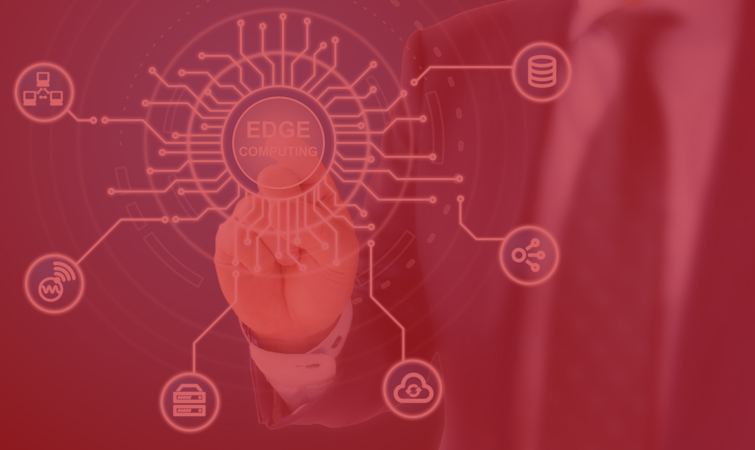Edge computing is storing, processing, and computing data near the user where the data is produced instead of sending data to the data center.
The automated navigation system used by drivers is the perfect example of edge computing. The route and the estimated time are taken in real-time and the data is taken from the server. The following factors made it cheaper and easier.
1. Speed
Any company’s primary business relies heavily on speed. Take, for example, the financial industry’s use of high-frequency trading algorithms. A lag in their trading algorithms of a few milliseconds can have serious financial ramifications. A fraction of a second can mean life or death in the healthcare profession, where the stakes are significantly higher.
Lagging speeds can frustrate customers and harm a brand’s long-term reputation for firms that deliver data-driven services to clients. Poor network performance and slow speeds may not seem life or death, but they might spell the end of your business. Speed isn’t only a competitive advantage; it’s also a best practice.
The ability of edge computing to improve network performance by reducing latency is its most significant benefit. The information collected by IoT edge computing devices does not have to travel nearly as far as it would in a standard cloud architecture because the data is processed locally or in nearby edge data centers.
It’s easy to forget in today’s world that data doesn’t travel at the speed of light; it’s subject to the same physical rules as everything else in the universe. Data may now move at 2/3 the speed of light, taking around 21 milliseconds to go from New York to San Francisco using commercial fiber-optic equipment.
However, as more data is exchanged, digital traffic congestion will almost certainly become a reality in the future. By 2023, the globe will have generated approximately 44 zettabytes of data (one zettabyte equals a trillion gigabytes). Every day, 463 exabytes of data (one exabyte equals a billion gigabytes) will be generated by 2025.
The “last mile” bottleneck, in which data must be routed through local network connections before reaching its final destination, is also a concern. The “final mile” can add anywhere from 10 to 65 milliseconds of latency, depending on the strength of these connections.
Edge computing reduces latency by processing data closer to the source and lowering the physical distance it must travel. End-users will benefit from faster bandwidth and latency measured in microseconds rather than milliseconds. Edge computing’s performance benefits are crucial to your network because even a single second of delay or downtime can cost firm thousands of dollars.
2. Security
While the rise of IoT edge computing devices increases the attack surface for networks, it also offers some significant security benefits. Traditional cloud computing design is fundamentally centralized, making it vulnerable to DDoS attacks and power outages. Edge computing distributes processing, storage, and applications over a wide range of devices and data centers, ensuring that a single outage does not bring the entire network down.
One big concern concerning IoT edge computing devices is that they might be used as a single point of entry for cyberattacks, allowing malware or other incursions to infect a network from a single point of weakness. While this is a legitimate concern, the distributed nature of edge computing architecture makes it easier to build security policies that isolate infected areas without shutting down the entire network.
Edge computing decreases the amount of data that is truly at risk in a single moment by processing more data on local devices rather than sending it back to a central data center. There are fewer data to intercept in transit, and even if a device is hacked, it’ll only have the data it’s acquired locally, rather than the wealth of data that a hijacked central server could expose.
Even if an edge-computing architecture includes specialized edge data centers, these typically include additional security measures to protect against DDoS attacks and other cyber threats. A good edge data center should provide clients with a choice of tools for securing and monitoring their networks in real-time.
3. Scalability
Companies can’t always predict their IT infrastructure needs as they grow. Building a separate data center is an expensive proposition, making future planning much more challenging. Aside from the significant upfront building expenses and continuous upkeep, there’s also the issue of future requirements.
Traditional private facilities stifle growth by locking businesses into projections of their future computing requirements. Insufficient computing capabilities may prevent them from capitalizing on opportunities if corporate development exceeds expectations.
The emergence of cloud-based technologies and edge computing, fortunately, has made expanding operations easier than ever before. Computing, storage, and analytics functions are progressively being combined into smaller devices that may be placed closer to end-users.
Companies no longer need to develop centralized, private data centers to expand data collecting and processing, which can be costly to build, maintain, and replace when it’s time to expand again. Organizations may quickly and cost-effectively expand their edge network reach by combining colocation services with regional edge computing data centers. Edge computing’s flexibility allows them to adapt swiftly to changing markets and scale their data and compute requirements more efficiently as they grow.
Edge computing, in brief, is a considerably less expensive path to scalability, allowing businesses to grow their processing capacity by combining IoT devices and edge data centers. Edge computing devices with processing capabilities help reduce growth expenses because each new device added does not place significant bandwidth demands on the network’s core.
4. Versatility
Edge computing’s adaptability is aided by its scalability. Companies can quickly target attractive markets without having to engage in costly infrastructure development by partnering with local edge data centers.
Edge data centers enable them to provide effective service to end consumers while reducing physical distance and latency. This is particularly useful for content providers who want to provide continuous streaming services. They also don’t bind enterprises with a large presence, allowing them to relocate quickly to new areas if the economy changes.
Edge computing enables IoT devices to collect massive volumes of useful data. Edge computing devices are always on, always connected, and always collecting data for future analysis, rather than waiting for individuals to log in with devices and interact with centralized cloud servers.
Edge networks collect unstructured data, which can be processed locally to provide speedy services or sent back to the network’s core, where powerful analytics and machine learning programs will analyze it to find trends and notable data points. Companies can make better decisions and satisfy the genuine demands of the market more efficiently if they have this knowledge.
Web development company in Chennai provides new and better services to their customers without totally revamping their IT infrastructure by adding new IoT devices into their edge network architecture. Purpose-built devices open up a world of possibilities for businesses that regard innovation as a source of growth. It’s a huge benefit for industries looking to expand network reach into regions with limited connectivity (such as the healthcare, agricultural, and manufacturing sectors).
5. Reliability
Given the security benefits of edge computing, it should come as no surprise that it also provides greater reliability. There is less possibility of a network problem in a remote place hurting local customers with IoT edge computing devices and edge data centers located closer to end-users. IoT edge computing devices will continue to function efficiently on their own even if a neighboring data center goes down. This is because they handle essential processing functions natively.
Edge computing decreases the quantity of data traveling to and from the primary network by processing data closer to the source and prioritizing traffic, resulting in lower latency and quicker overall speed. Physical distance is also important for performance. The best web development company in Chennai are using edge computing to increase their performance.
Companies can drastically reduce the distance data must travel before services can be delivered by cutting-edge systems in data centers that are geographically closer to end-users and spreading processing accordingly. Customers want quick access to their information and apps wherever, at any time, thus these edge networks provide a speedier, more seamless experience for them.
With so many edge computing devices and edge data centers connected to the network, every single failure has a considerably harder time completely shutting down service. Data can be diverted in a variety of ways to ensure that consumers have access to the products and information they require. Unprecedented reliability can be obtained by combining IoT edge computing devices and edge data centers into a full edge architecture.

